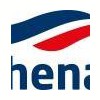
We manufacture our mineral wool and PIR insulation solutions across three sites in the UK. Our Celotex PIR insulation is manufactured on two production sites, Hadleigh in Suffolk and Eggborough in Yorkshire. While our Isover mineral wool insulation solutions are manufactured in Runcorn in Cheshire. As well as a large portfolio of insulation solutions, we have a strong focus on innovation, technical support and delivering high standards of customer service. We also offer a nationwide distribution service from our three manufacturing facilities.
Pitched roofs are a common sight in the UK owing to their versatility and typical low maintenance requirements when compared to other forms of roof construction. Another key advantage of specifying a pitched roof is the ability to provide a very high level of thermal performance in these roof types, whether you're looking to insulate at joist (ceiling) level for a cold pitched roof or at rafter level if a living area within a warm roof construction is desired. Saint-Gobain Insulation UK manufacture and supply glass mineral wool slabs and rolls along with rigid Polyisocyanurate (PIR) boards that can be considered suitable for a wide range of applications across pitched roofs whether you're looking to insulate at joist level or at rafter level in your pitched roof construction.
Insulation products for HVAC are typically made from either glass mineral wool or stone mineral wool and are designed to provide thermal, acoustic and fire performance. Thermal insulation limits unwanted heat losses & gains from the building through service ducts, while the acoustic properties of the insulation help maintain acoustic comfort for building occupants by deadening unwanted noise from mechanical systems or noise transfer from spaces. Appropriate fire protection of ducts is vital to stopping unseen fire spread, as required by national building regulations.
HVAC ductwork and systems require thermal insulation to keep air temperature and systems running as designed. HVAC insulation installations are designed to provide thermal and acoustic comfort, and safety to a buildings' occupants. Investing in a fully adapted insulation solution also has numerous benefits for project owners (reduced energy consumption) installers (lightweight and easy to handle) and occupants (improved comfort). Thermal energy (both hot and cold) can be lost to the ambient air throughout the length of all ducts.
Building Information Modelling (BIM) is a collaborative process for designing, constructing and operating a building during its life cycle. BIM is a process which makes use of information-rich, constructible, structural models to help make the project and operational information actionable for buildings. It offers tools, and detailed information about buildings. Our thermal and acoustic insulation products are available in a range of thicknesses, with solutions suitable for roofs, walls and floors.
The ISOVER Insulation Handbook is an essential tool offering useful information about our extensive range of high performing glass mineral wool and stone wool insulation products, and the applications in which they can be used. The Handbook includes easy-to-use product and application summaries, U-value calculation tables, acoustic performance information and detailed illustrations.
The Domestic Renewable Heat Incentive (RHI or DRHI) is a government-backed financial incentive that is run through Ofgem and designed to help promote the use of renewable heating systems. Households with qualifying renewable technologies can join the scheme, and they will receive quarterly payments for seven years for the amount of renewable heat their system has produced. If you're receiving a DRHI, you can get a Green Homes Grant to cover the cost of energy efficiency measures such as wall, floor and roof insulation, external wall insulation and new heating controls.
Our thermal and acoustic portfolio includes glass mineral wool, stone wool and PIR insulation, supporting all market sectors with a wide range of insulation solutions.




